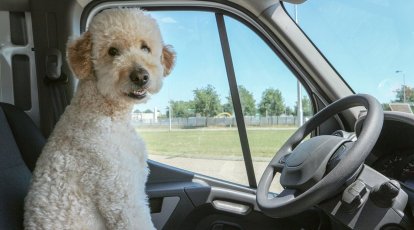Pet Transportation: Safe and Comfortable Travel for Your Pets
Traveling with pets can be a daunting task, but with the right preparation and knowledge, it can be a safe and comfortable experience for both you and your furry friend. Whether you are moving to a new city, taking a vacation, or visiting the vet, ensuring that your pet is transported safely is crucial. This article provides a comprehensive guide to pet transportation, covering preparation, modes of transport, safety tips, and comfort measures.
1. Preparation for Pet Transportation
Img tag: 
a. Health Check-Up
Before any trip, ensure your pet is healthy and fit to travel. Visit your veterinarian for a thorough check-up. Make sure all vaccinations are up-to-date and obtain a health certificate if necessary, especially for air travel.
b. Identification
Ensure your pet has proper identification. A collar with an ID tag containing your contact information is essential. Consider microchipping your pet for added security.
c. Acclimation
Acclimate your pet to the copyright or crate well in advance of the trip. Place familiar items such as toys or blankets inside to make it a more welcoming space. Gradually increase the time your pet spends in the copyright to reduce anxiety.
2. Choosing the Right Mode of Transport
a. Car Travel
Car travel is often the most convenient and comfortable way to transport pets. Here are some tips for safe car travel:
- Secure Your Pet: Use a pet seatbelt, copyright, or crate to keep your pet secure and prevent distractions while driving.
- Avoid Leaving Pets Alone: Never leave your pet alone in a parked car, as temperatures can rise or fall quickly, posing serious health risks.
- Frequent Breaks: Take regular breaks to allow your pet to stretch, relieve themselves, and have some water.
b. Air Travel
Air travel can be stressful for pets and should be carefully planned. Here are key considerations:
- Research Airlines: Different airlines have varying policies regarding pet travel. Choose an airline with a good track record for pet safety.
- Cabin vs. Cargo: Small pets may be allowed in the cabin, while larger pets will need to travel in the cargo hold. Ensure the cargo area is climate-controlled.
- Proper Crate: Use an airline-approved crate that is sturdy and well-ventilated. Label the crate with your pet's name, your contact information, and destination details.
c. Public Transport
Public transport options like buses and trains may have restrictions on pet travel. Check with the service provider in advance and follow their guidelines. Small pets in carriers are usually allowed, but larger pets may be restricted.
3. Ensuring Safety During Transport
a. Hydration and Feeding
Keep your pet hydrated throughout the journey. Offer water at regular intervals but avoid feeding them a large meal right before travel to prevent motion sickness. Instead, provide a light meal a few hours before departure.
b. Restraint Systems
Invest in proper restraint systems such as pet seatbelts or crash-tested crates to ensure your pet's safety during sudden stops or accidents.
c. Temperature Control
Maintain a comfortable temperature in the vehicle. Avoid extreme temperatures by using air conditioning or heating as needed. For air travel, choose flights that avoid extreme weather conditions.
d. Emergency Kit
Pack an emergency kit containing:
- Pet first-aid supplies
- Medications
- Extra food and water
- A copy of your pet’s medical records
- A recent photo of your pet
4. Ensuring Comfort During Transport
a. Familiar Items
Bring along your pet's favorite toys, blankets, or bedding to provide a sense of familiarity and comfort. These items can help reduce anxiety and make the travel experience more pleasant.
b. Exercise Before Travel
Give your pet plenty of exercise before the trip to help them relax. A tired pet is more likely to sleep during the journey.
c. Noise Reduction
Minimize exposure to loud noises, which can stress your pet. Use noise-canceling covers for carriers or play calming music to create a soothing environment.
d. Calming Aids
Consider using calming aids such as pheromone sprays, anxiety wraps, or veterinarian-prescribed sedatives if your pet is prone to travel anxiety. Always consult with your vet before using any calming products.
5. Legal Considerations and Documentation
a. Travel Regulations
Research and comply with travel regulations for pets, especially for international travel. Different countries have specific entry requirements, including quarantine laws, vaccinations, and health certificates.
b. Documentation
Keep all necessary documentation handy, including:
- Health certificates
- Vaccination records
- Identification papers
- Airline or transport service confirmations
6. Post-Travel Care
a. Health Check-Up
After a long journey, monitor your pet for any signs of stress or illness. Schedule a follow-up visit to the vet if you notice any unusual behavior or symptoms.
b. Gradual Acclimation
Allow your pet time to acclimate to the new environment. Maintain a consistent routine and provide comfort items to help them settle in.
Conclusion
Traveling with pets requires careful planning and consideration, but with the right preparations, it can be a safe and enjoyable experience. Prioritize your pet’s health, safety, and comfort at every step of the journey. By following these guidelines, you can ensure that your furry companion arrives at your destination happy and healthy, ready to embark on new adventures with you.
Comments on “"Pet Transportation: Safe and Comfortable Travel for Your Pets"Pet transportation safe and comforts travel for your pets”